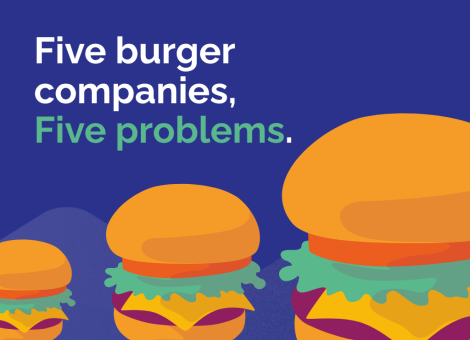How fuel diversification is distrupting the industry
Fossil fuels are, and will continue to be, a dominant and ubiquitous force in the global energy landscape. However, that landscape is undergoing significant change, including a shift in the diversity of energy demand among consumers. In some markets, fossil fuel demand continues to swell. In others, interest in alternative fuels has taken off, inciting a number of concerns about the future of energy usage, retail strategy, and infrastructure.
While these concerns are, by some accounts, grossly overstated — there is no reason to believe that fossil fuels are going to disappear any time soon — the trend toward increasing fuel and energy diversification is one that fuel and convenience retailers must pay close attention to.
The Diversification of Fuel Demand Around the World
Alternative fuels like biofuels, hydrogen, and natural gas, as well as new and evolving transportation technology such as electric and hybrid vehicles, are shifting consumer demand, behavior and attitudes regarding fuel and transportation in general. The nature and strength of these shifts are largely dependent on the market in which they’re occurring.
For example, in China and India, the demand for transportation fuel is escalating rapidly. India’s oil consumption has been growing at a rate of 5 to 10 percent per year, whereas China alone accounted for about 43 percent of global oil demand growth between 2009 and 2015. Retailers in these markets may even be struggling to keep up with the growing demand for fossil fuels and gas.
On the other hand, in more established markets such as the United States, fuel demand may be static or beginning to decline for a number of reasons, including:
- Consumers are driving fewer miles, leading to a decrease in fuel consumption.
- Newer vehicles are able to cover those miles more efficiently, so the same distance requires less fuel.
- Due to financial, environmental, and regulatory drivers, there is a greater appetite for consumers to consider alternative fuels and future electrics.
In fact, the fossil fuel share of total US energy consumption in 2017 was the lowest share in over a century, while the renewable share that year was the highest.
What these market-dependent shifts are telling us is that there is no single, unequivocal answer to the question: What will the future of transportation fuel look like? In today’s complex and evolving markets around the world, there is too much noise to tell us exactly which type of fuel will rise to dominate the energy industry — because, realistically, the energy landscape of the future will be a diverse mix of alternative fuels, fossil fuels, and electric vehicles.
Therefore, fuel retailers in any market need to satisfy and retain their existing customers while remaining flexible to shifting market demands. Some markets will have dramatically different demand mixes than others, and you need to begin thinking strategically about the best way to meet the demands of a varied and dynamic customer base.
Thinking Strategically About Diversified Fuel and Convenience Offerings
These trends in transportation and fuel demand are only going to continue, and fuel retailers need to begin accounting for those trends in their current network strategies. You can do this, first, by taking a look at the big picture: What kind of market are you in? What are the macro environmental and economic factors that are driving consumer behavior in your market?
For example, let’s think about India again. In India, the demand for fossil fuels is climbing because fossil fuels are the easiest and most readily available fuels for meeting transportation needs in that region. It doesn’t make much sense yet to drive an electric vehicle in India, because outside of the major urban areas, the infrastructure to deliver power to these vehicles doesn’t yet exist — however, there is a plentiful supply of natural gas. So retailers in India will want to develop an alternative fuel strategy that focuses around natural gas because it’s readily available, it’s easy to deliver to both remote and urban locations, and they have the infrastructure for it.
In developed markets, the situation is potentially reversed. The power infrastructure in the UK, for example, isn’t capable of serving more than a certain number of electric vehicles on the road, and natural gas is not prevalent enough to be positioned as an alternative. In these markets, the fuel diversification strategy will look markedly different.
Once you’ve begun to think strategically about the unique trends, demands, and behaviors in your market, you can begin to think about the best ways to service those demands effectively. Your fuel and energy diversification strategy should consider three things:
- What are the primary alternative fuel demands in my market?
- What is my network’s ability to serve different alternative fuels?
- What is the availability of that fuel to serve customers in this region?
If you don’t have the resources to conduct this research on your own, companies like the Fuels Institute in the US and the various hydrogen bodies in Europe and Southeast Asia are undertaking that core research on behalf of the industry to understand those key trends and help retailers achieve the same ends without the luxury of extensive resources.
The other, more straightforward thing any retailer can do is simply listen to their customers. With technology as readily available as it is today, there’s no reason that retailers can’t ask customers about their views on alternative fuels.
Plus, using data science techniques and deep learning models, you can analyze consumer behavior and other market trends to better understand how to service the customers in your market, how to adapt your non-fuel offerings to attract customers using a diverse array of transportation fuels, and how to forecast the future trajectory of the market.
With more obvious feedback and data about customer needs, you can develop the flexibility and awareness to optimize your network offerings to meet those needs. In most cases, that flexibility will need to take the form of optimized non-fuel offerings as well.
Optimizing the 7 Elements to Fortify Your Fuel and Energy Diversification Strategy
Fuel and energy diversification is creating the need for diversification in non-fuel convenience offerings.
As you expand and adapt your alternative fuel offerings, the nature of site visits is liable to change. Some alternative fuel choices, such as electric vehicles, require consumers to spend more time at fuel and convenience sites while they’re waiting to fuel up. This opens up the opportunity to provide more services to consumers while they’re at your site. In many well-developed markets, things like laundry, restaurant-type meals, WiFi, and e-commerce collection/delivery points are becoming more common at gas stations. More progressive fuel retailers are creating environments for groups of local consumers to meet and spend time at their outlets.
Fuel and convenience retailers need to think more broadly about how they can optimize every element of their site to turn it into a destination stop for travelers. Because many retailers already have large amounts of real estate in strategic locations where people travel, live, and work, they’re already at a huge advantage for capturing a strong customer base by maximizing their use of that real estate.
The bottom line is: Fossil fuels are here to stay. But the industry’s complexity and competitiveness is only going to increase as time goes on, and fuel retailers need to be prepared. With an adaptable, data-driven, customer-first mindset, you can maximize the success of your network through all of the crests and troughs of industry trends.
Read more articles about:
Fuel pricingSubscribe and get the latest updates
You may unsubscribe from our mailing list at any time. To understand how and why we process your data, please see our Privacy & Cookies Policy
Related posts
Location intelligence
Five burger companies, five problems
These burger brands had challenges from international growth to understanding franchise locations cannibalization,...

Location intelligence
Market Optimizer: Demo video
Market Optimizer allows users to strategically grow their network in existing markets while balancing revenue...

